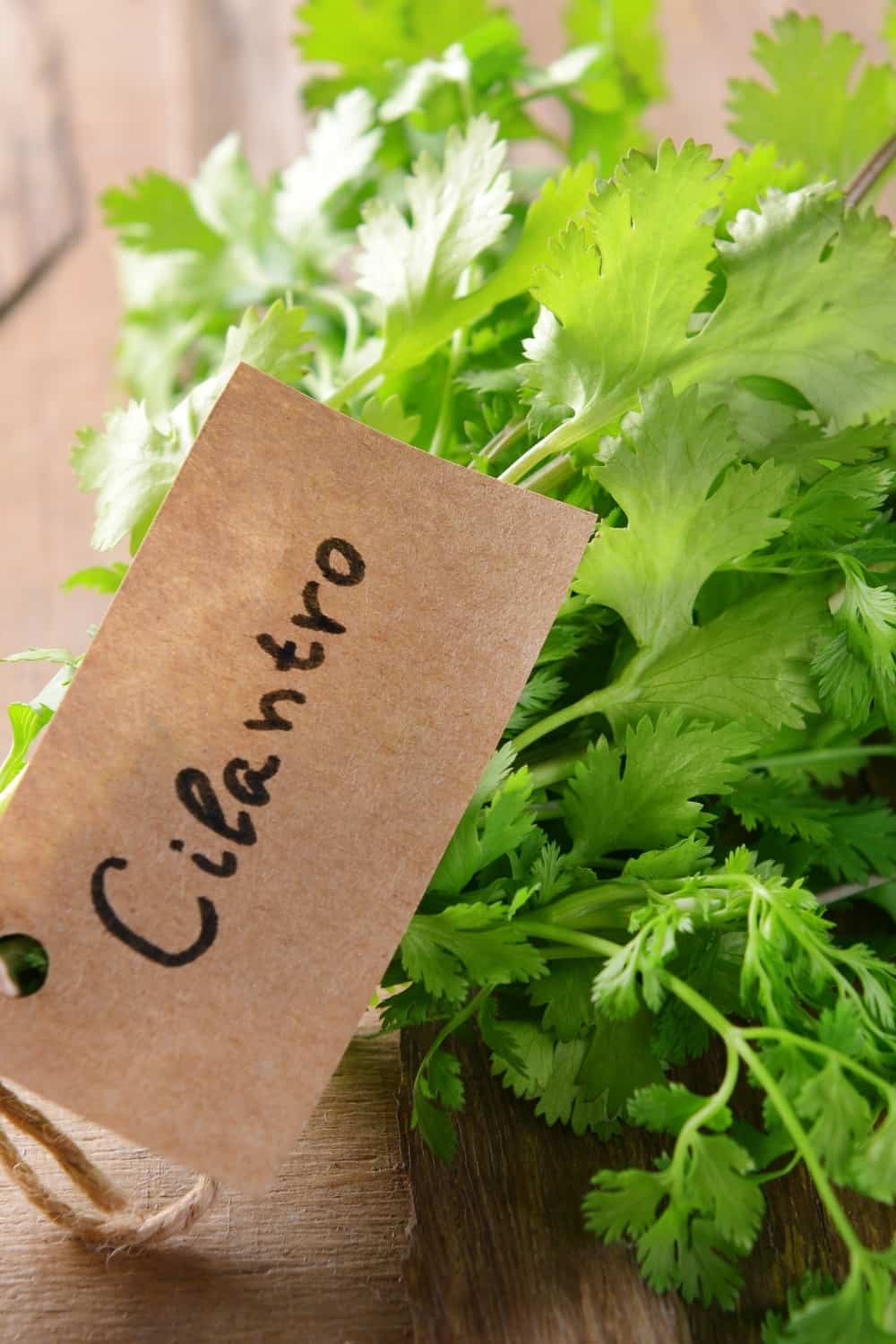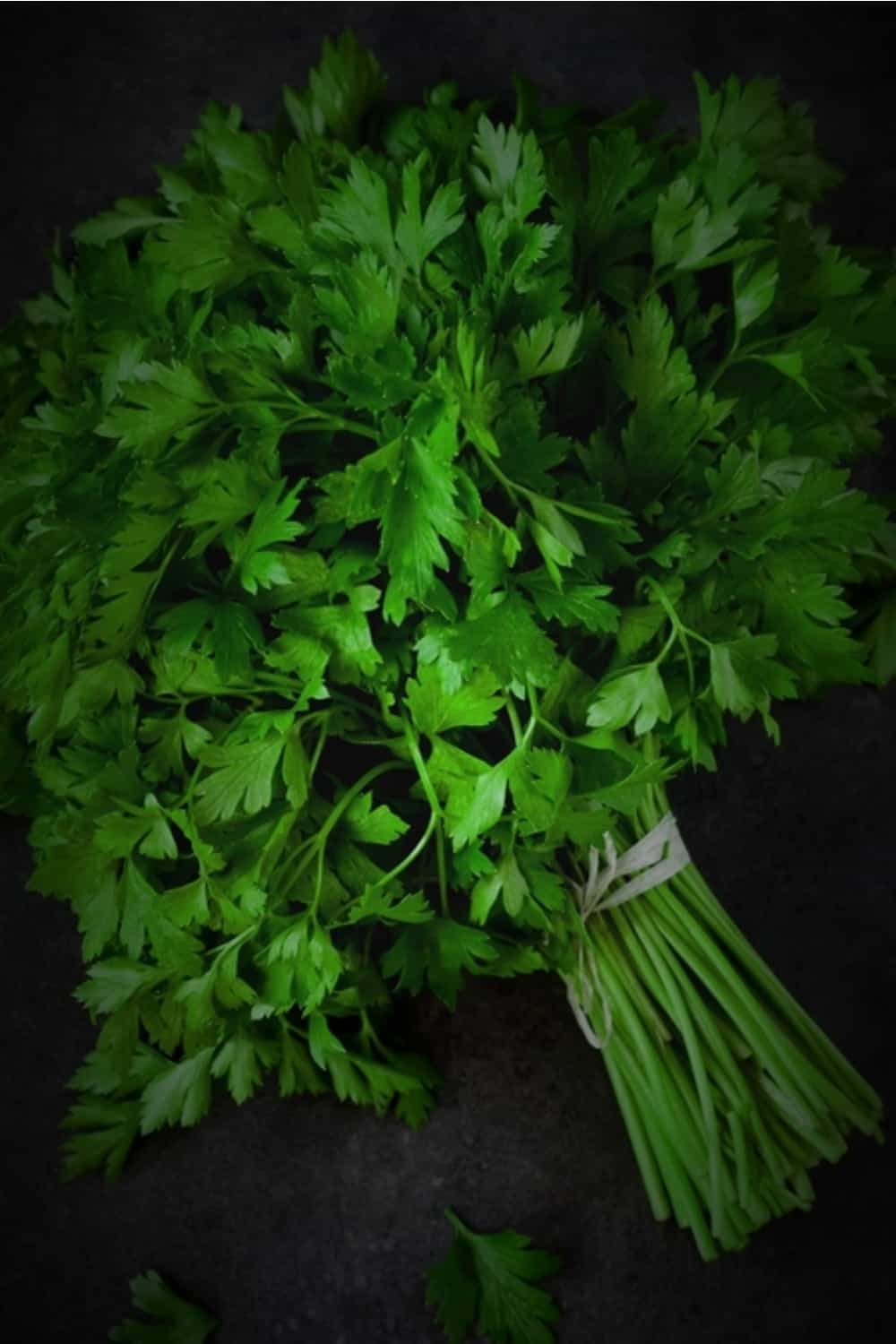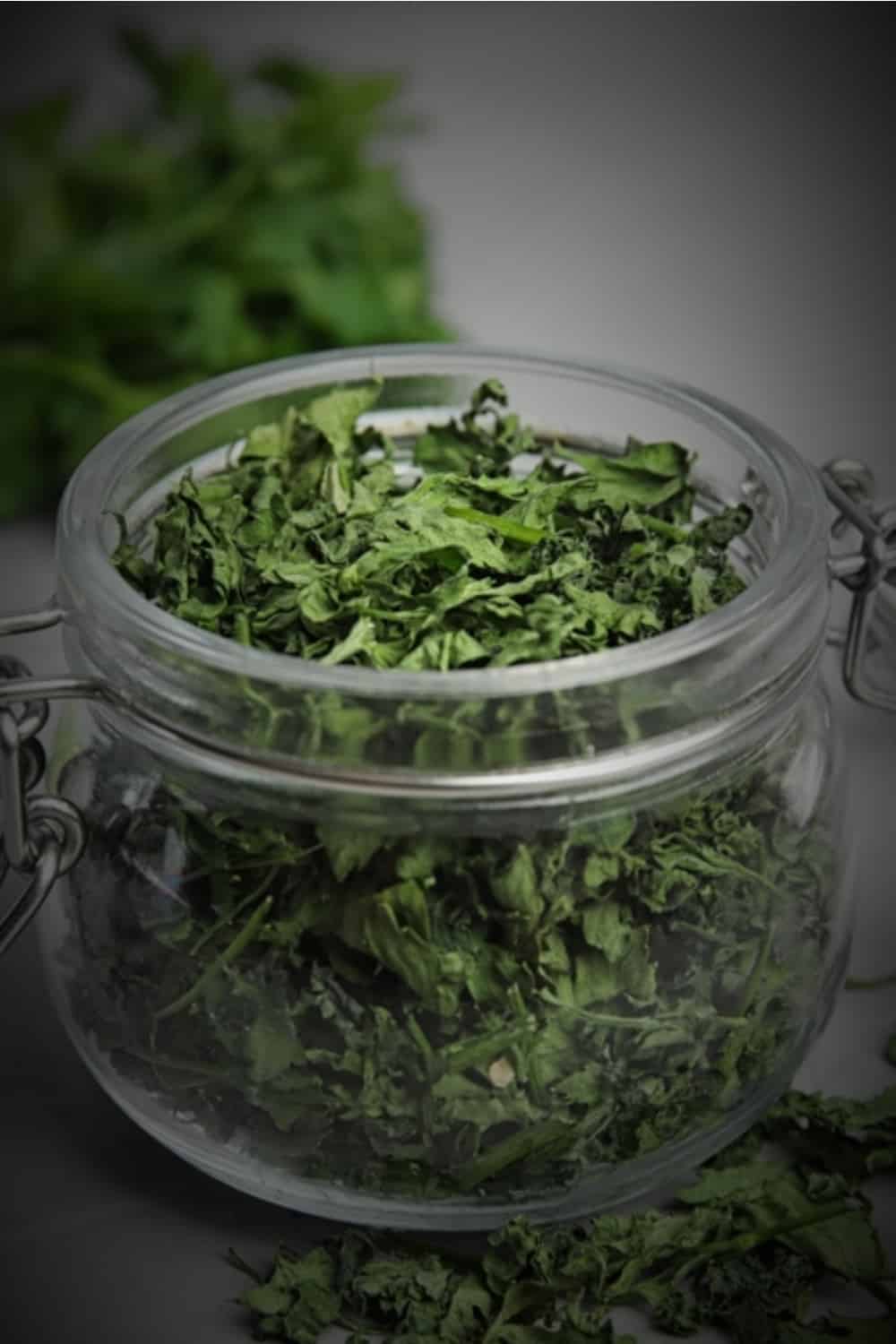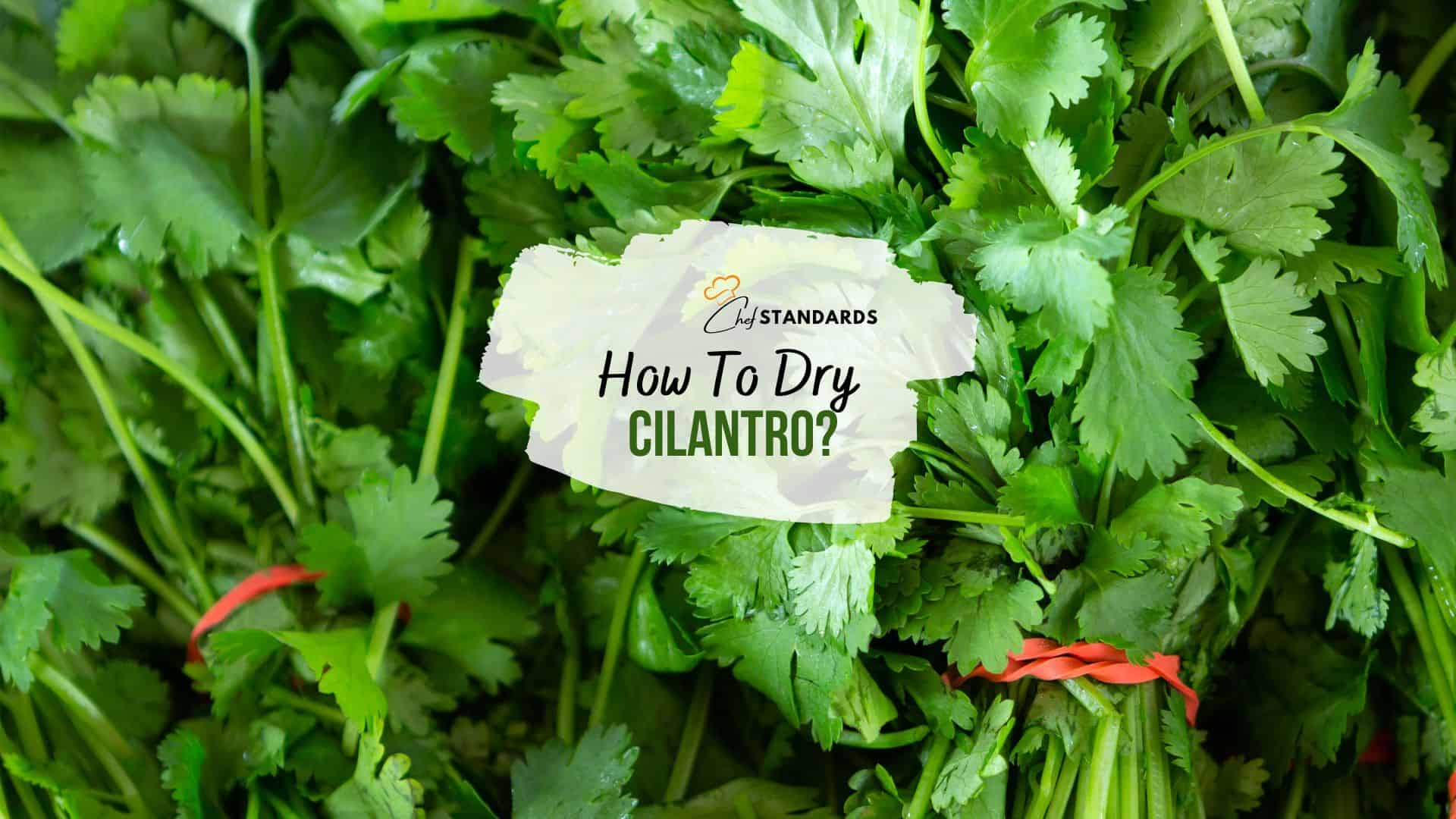Cilantro, also known as coriander, is a herb that can enrich many dishes with its fresh and citrusy flavor, as well as provide them with a lot of nutrients.
Cilantro is a cool-season herb that is mostly enjoyed in fall and early spring when it is freshest and most suitable for all sorts of cooking adventures. But what about other times of the year? Can we enjoy it throughout the year?
The good news is we can, because cilantro can be dried and preserved for much longer than those brief periods when it is cold.
But how to dry cilantro?
You have to pick the right one, prepare it the right way, choose the best drying method for you, and store it properly. Easy peasy, right?
Choose The Best Cilantro

This one goes for all types of foods and ingredients, and cilantro is no exception. If you want the result to be great, you have to make good choices from the start. To help you with that, I will provide you with a few tips to choose the best cilantro.
• The first thing you need to look out for when selecting cilantro is the leaves. Choose the leaves that are bright green in color and free from wilting or yellowing. They should look fresh and crisp with no signs of damage or discoloration.
• After observing them, you should smell the leaves. If they have a fresh, citrusy aroma, you are good to go. However, if they have a musty or unpleasant smell, it is best to avoid them because they are past their prime.
• After the leaves, check the stems. Stems of fresh cilantro are firm and green in color. However, if they are not so fresh, they will be slimy or wilted, as well as discolored, and you should avoid consuming those.
• Check if there are any flowers on the cilantro. Once they produce flowers, they are not so flavorful anymore, so the result won’t be that great.
• Always try to buy from a reputable source, ideally from a farmer’s market, but you can also buy some from the grocery store with a high turnover rate for fresh produce.
• Make sure that you dont buy culantro instead. Although culantro and cilantro have very similar names, these two herbs are actually quite different.
Prepare Cilantro The Right Way
After choosing the best cilantro from your local grocery store or farmers market, it is still not ready for the drying process. You need to prepare it the right way and the right steps you need to follow are listed below.
• You first need to rinse your cilantro properly under cold water to remove any dirt or debris.
• Dry it properly and the best way to do that is to pat the leaves dry with a clean kitchen towel or paper towel.
• (DOESN’T COUNT FOR AIR-DRYING METHOD) Next, remove the stems from the cilantro. The best way to do this is by grasping the bunch of cilantro at the base of the stems and pulling the leaves downward with your other hand.
• (OPTIONAL) Finally, if your preferred version of cilantro is smaller pieces, you can chop the leaves with a sharp knife. However, keep in mind that chopped cilantro may dry out more quickly than whole leaves.
4 Excellent Methods To Dry Your Cilantro
Now that your fresh cilantro is ready, it is finally time to dry it. And there are more than one way to do so. According to the procedure and your preferences, it is up to you to decide which one is your preferred method.
The four best methods to dry your cilantro properly include an air-drying method, oven method, dehydration method, and microwave method.
1. Traditional Air-Drying Method

The air-drying method is the traditional one and you can always use it easily to dry your cilantro. Here is what you need to do.
STEP 1: Unlike other methods, in this one, it is preferred to leave the stems uncut. So, when you rinse the entire cilantro properly, you will tie the stem ends of a few pieces of cilantro together by using a piece of string or twine.
Tie a knot about 1 inch away from the end of the bunch and the knot needs to be tight enough to hold the bunch after the stems shrink during the process.
STEP 2: Your next task is to insert a properly tied bunch of cilantro into a paper bag so that the leaves are inside the bag and the string hangs out of the back of the bag.
The bag must be tied tight enough around the stems so that the stems stay attached when the cilantro shrinks during the drying process.
STEP 3: Once you are done with the previous step, it is important to store the bag with cilantro the right way and in the right place.
Store it in a warm, dry area, but away from direct sunlight, high heat sources (like an oven, for example), and air-conditioning vent that can easily change the temp around the paper bag and increase the humidity inside.
The ideal temperature for this process is around 70°F to 80°F (21°C to 27°C).
How to store it there? Well, you need to hang the bag with the cilantro upside down. You can use a hook or clothespin to attach the bundle to a string.
STEP 4: Finally, you can wait for the cilantro to dry. It usually takes around 5-7 days for cilantro to completely dry. I would recommend you leave it for 7 days.
After that time frame, check your cilantro. The leaves should be crispy and the stems should snap easily when fully dry.
If this is not the case, it is best to leave your cilantro for an additional 5 days. After that, it should be perfectly dry.
2. Dry Your Cilantro In The Oven
If you want a faster method to dry your cilantro, you can dry it in the oven. The process is relatively simple and you need to follow just a few steps to achieve your drying goal.
STEP 1: After you washed and dried your cilantro and removed the stems, your task is to prepare your oven for the drying process.
To do that, you will have to preheat the oven to 250 °F (121 °C). Setting your oven to a low temperature will ensure that the cilantro doesn’t burn as it dries.
STEP 2: After preparing the oven, your next task is to prepare a baking tray. Take a baking spray and apply a light coat over the surface of the baking tray to prevent the cilantro from sticking to that same tray.
STEP 3: Once the oven and the baking tray are ready, you need to take those properly prepared cilantro leaves and spread them on the baking tray.
Spread all of the leaves around the tray so that they form one layer. By doing this, you will ensure that they dry evenly.
STEP 4: Now that your baking tray with the cilantro on it is ready, you can finally place it in the oven.
To do that right, it is best to place the baking tray on the middle rack of the oven so the heat can circulate around it.
STEP 5: Once the baking tray and cilantro are inside, all you need to do is to set the timer and leave your cilantro undisturbed as it dries in the oven without opening the door of the oven.
STEP 6: After half an hour, you can finally open the door of your oven, take the tray of cilantro out, and let it cool for about 10 minutes.
Those 10 minutes are actually the last minutes in which your cilantro goes through the drying process.
3. Dehydrate Cilantro
The dehydration method is also an easy one since you only need a good dehydrator and a bunch of fresh cilantro.
STEP 1: After preparing your cilantro according to the steps explained in the first part of the article, you first need to arrange the cilantro leaves in a single layer on the dehydrator tray.
Just make sure that the leaves are not overlapping each other to ensure even drying.
STEP 2: According to the National Center for Home Food Preservation, you should “pre-heat dehydrator with the thermostat set to 95°F to 115°F. In areas with higher humidity, temperatures as high as 125°F may be needed.”
You can also refer to the dehydrator’s manual for the recommended temperature for herbs if you want.
STEP 3: Now place the tray with cilantro leaves in the dehydrator and allow them to dry for about 2-4 hours.
It is not out of hand to check the leaves regularly to ensure they are drying evenly and not burning.
STEP 4: After the time is up, you can pull out the tray with the cilantro on it. My recommendation is to test their dryness.
Just pick up a leaf and try to snap it. If it snaps easily, the cilantro is dry. If it bends or is not brittle, it needs more time in the dehydrator.
4. Microwave To Dry It Fast
If you want to dry your cilantro without sacrificing too much of your precious time, the microwave method could be just for you. All you need is fresh cilantro, a microwave-safe palate, and some paper towels.
STEP 1: The first thing you need to do is to prepare a microwave-safe palate by placing a layer of paper towels on it.
After that, you can arrange the cilantro leaves in a single layer on top of the paper towels and they are ready for the microwaving process.
STEP 2: You can now place the plate in the microwave and set it to high power. Microwave the cilantro leaves for 1-2 minutes, checking the leaves every 30 seconds to ensure that they are drying evenly.
STEP 3: Once again, test the dryness of your cilantro after the time is up. Take a leaf and try to snap it. If it snaps easily, your cilantro is dry.
However, if it bends or is not brittle, you need to microwave it longer.
STEP 4 (if needed): If they are not completely dry after the first microwave cycle, continue microwaving them in 30-second intervals until they are fully dried.
STEP 5: Once you are sure your cilantro leaves are completely dry, remove the plate from the microwave and allow the leaves to cool completely.
And that is actually the last part of the drying process.
How To Store Your Dried Cilantro?

Storing dried cilantro is a really easy process, but through these simple tips, I will try to make it even easier for you.
• Although I already stated that above, it is not out of hand to repeat that you need to let your cilantro cool down completely before storing it.
• If you use the air-drying method, remove the stems after drying and cooling the cilantro because the flavor is mostly concentrated in the leaves.
• On the other hand, if you use the oven method, you need to scrape the leaves off of the baking tray by using a spatula. Use a gentle scraping motion to pry off any stuck leaves of the tray.
• Regardless of the method used, you need to transfer the dried cilantro to an airtight container. Make sure that the container is clean and completely dry.
• After that, label the container to make sure that you can identify the dried cilantro later. You can also label it with the date of storage to be sure that it is still good for consumption.
• You must store the container in a cool, dry place, such as a pantry or cupboard and it will stay good there for up to 3 years.
It is essential to keep the container away from direct sunlight or high heat sources because those can cause the dried cilantro to lose its flavor and aroma.
• It is not out of hand to check the dried cilantro periodically to ensure that it is still dry and there are no signs of moisture or mold. If you notice any, discard it and replace it with a fresh batch.
But What To Do With Those Discarded Stems?
Stems of cilantro are not so suitable for drying because they mainly lose their flavor during the process. But that doesn’t mean you need to toss them in the trash. You can certainly use them in some types of dishes and here are some examples.
• Use them to make broth or beef consomme
• Use them in marinades
• Add cilantro stems to salads
• Make chutney out of them
• Use in stir-fries
• Garnish other dishes with stems of cilantro
How To Make The Best Out Of Dried Cilantro?
There are various ways to use dried cilantro. It has a concentrated cilantro flavor and, besides that, it is also quite healthy so you can have multiple benefits from using it. Some of the ways to use dried cilantro are listed below.
• The most popular way to use dried cilantro is to use it as a seasoning in a variety of dishes, including soups, stews, sauces, and curries.
• You can also infuse it with oil or vinegar by adding a few tablespoons of fried cilantro to a bottle and letting it sit for a few days. You can use this mixture to add cilantro flavor to salads, dressings, and marinades.
• Dried cilantro can also be used for making spice blends. It is even a key ingredient in many of them, including garam masala, chili powder, and curry powder.
• If you want to provide your dips or spreads, like guacamole, hummus, or salsa, with a fresh, herbaceous flavor, there is nothing better than to add a few pinches of dried cilantro.
• Like is the case with many other aromatic and healthy herbs, you can also use cilantro to make tea. The process is very simple, as you only need to steep a tablespoon of dried cilantro in a cup of hot water for a few minutes, then strain and enjoy.
• You can use cilantro as a substitute for winter savory or as a mint substitute. Cilantro is also used as a substitute for smoked paprika. The NCHFP suggests substituting dried herbs for fresh herbs by using 1/4 to 1/3 of the amount listed in the recipe.
• Finally, cilantro can be a great garnish for a variety of dishes. Just sprinkle some over your favorite soups, salads, and tacos. Not only will that add color and flavor, but it will also make them look more appealing.


